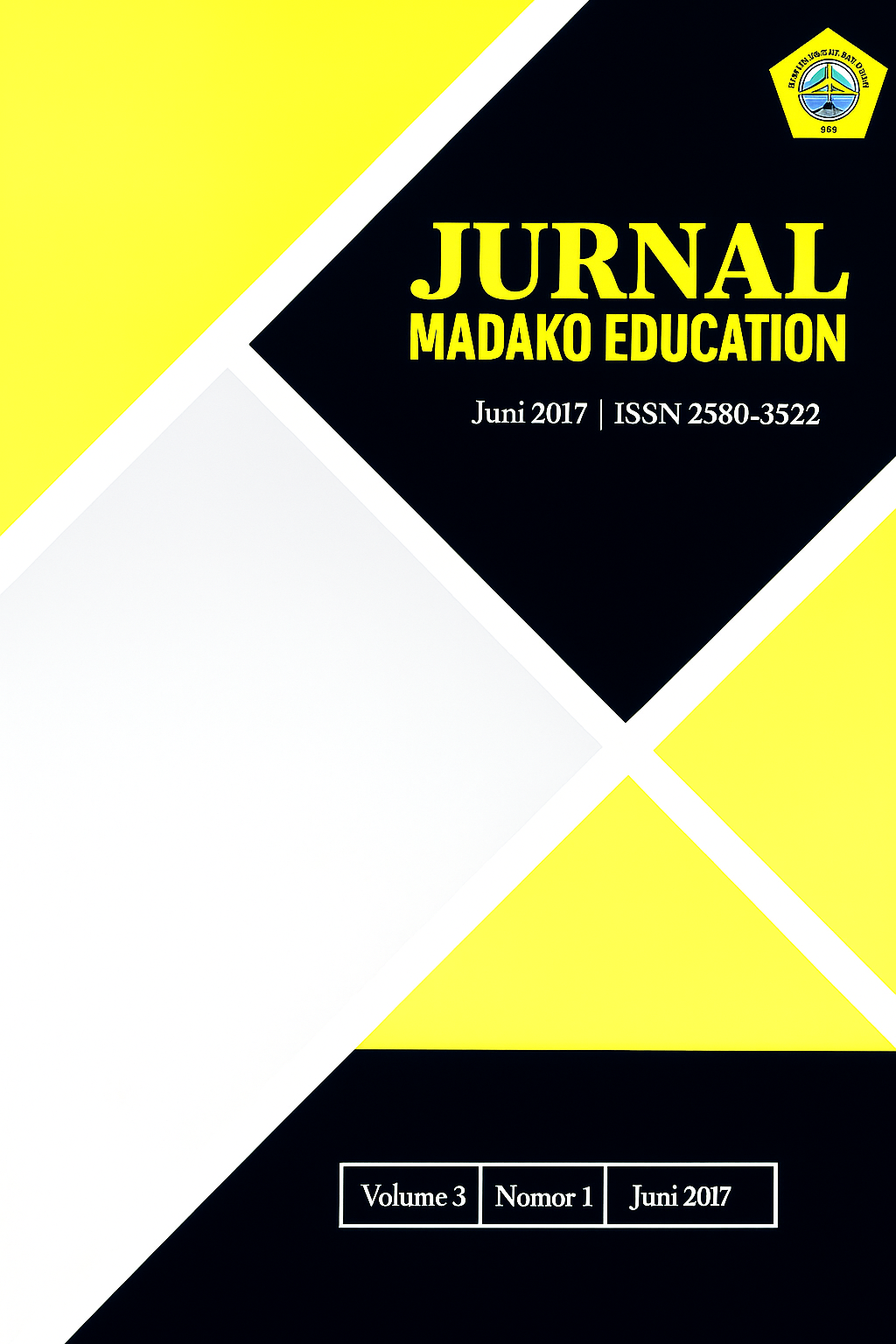IMPROVING STUDENTS’ ABILITY IN WRITING RECOUNT TEXT USING THINK, TALK, WRITE STRATEGY OF FIRST GRADE AT SMK NEGERI 1 TOLITOLI
Abstrak
The purpose of this study is to find out the empirical evidence concerning whether story mapping is effective or not to improve students reading comprehension. Story mapping is use to motivate students in reading because it helps them to visualize the important elements of story and make students’ thoughts to be more organized, the researcher is interested to conduct a research by applying the technique of story mapping toward students’ reading comprehension through the material. This study was held in March 2015 at SMAN 1 Ogodeide. This study used a quantitative method in the design of pre-experimental study. The sampling technique use in this study is purposive sampling. The researcher took one class as the subject of this study. The sample is XB class. The improvement of students’ score can be seen from the differences between pre-test and post-test. The mean score of pretest is 34.24 and it improves to 77.52 in post. Moreover the Minimum Mastery Criterion of English lesson is 70 (seventy). Then the data of both test are analyzed by using T-test, and the result showed that the T-test value 18.27 was greater than T-table value 2.064. According to the criteria of the test, the result showe that there is a significant improvement between students' achievement in reading comprehension by using story mapping before and after pre-test and post-test are conducted. It means that story mapping technique is effective and applicable at the X grade of SMAN 1 Ogodeide to teach students’ reading comprehension. Key words: Improving, reading comprehension, story mapping
Referensi
Alderson, J.C. 2000. Assessing Reading.New York: Cambridge University Press.
Anderson, J. Neil. 2003. Active Skill For Reading :Student Book 4. New York :Heinle&Heinle Thomas Learning Inc.
Cline, F., Johnstone, C., & King, T. (2006) Focus Group Reaction to Three Definition of Reading (as Originally Developed in Support NARAP Goal 1). Minneapolis, M.N.: National Accessible Reading Assesment Project.
Dallman, Marta. Roger L. Rouch. Lynette Y. C. Char. Jhon J. DeBoer. 1982. The Teaching of Reading. New York: College Publishing.
Harmer, J. 1998. How to Teach English. Essex: Pearson Education Limited.
Jeanne M. Stone. 2000 Comparative Learning Reading Activities, (San Clemente: Kagan Publishing.
Klingner, K. J., Vaughn, S., Boardman, Alison. (2007). Teaching Reading Comprehension to Students with Learning Difficulties. New York: The Guilford Press.
Nunan, C. 2000. Teaching Reading Skills in a foreign Language.Oxford :Macmillan Heineman.
Pamela J Farris. 2004.Teaching reading: A Balanced Approach for Today’s Classroom, NewYork: McGraw Hill, p. 345.
Pang, S. 2003. Teaching Reading. Brussels: International Academy of Education (IAE),P.6:14.








